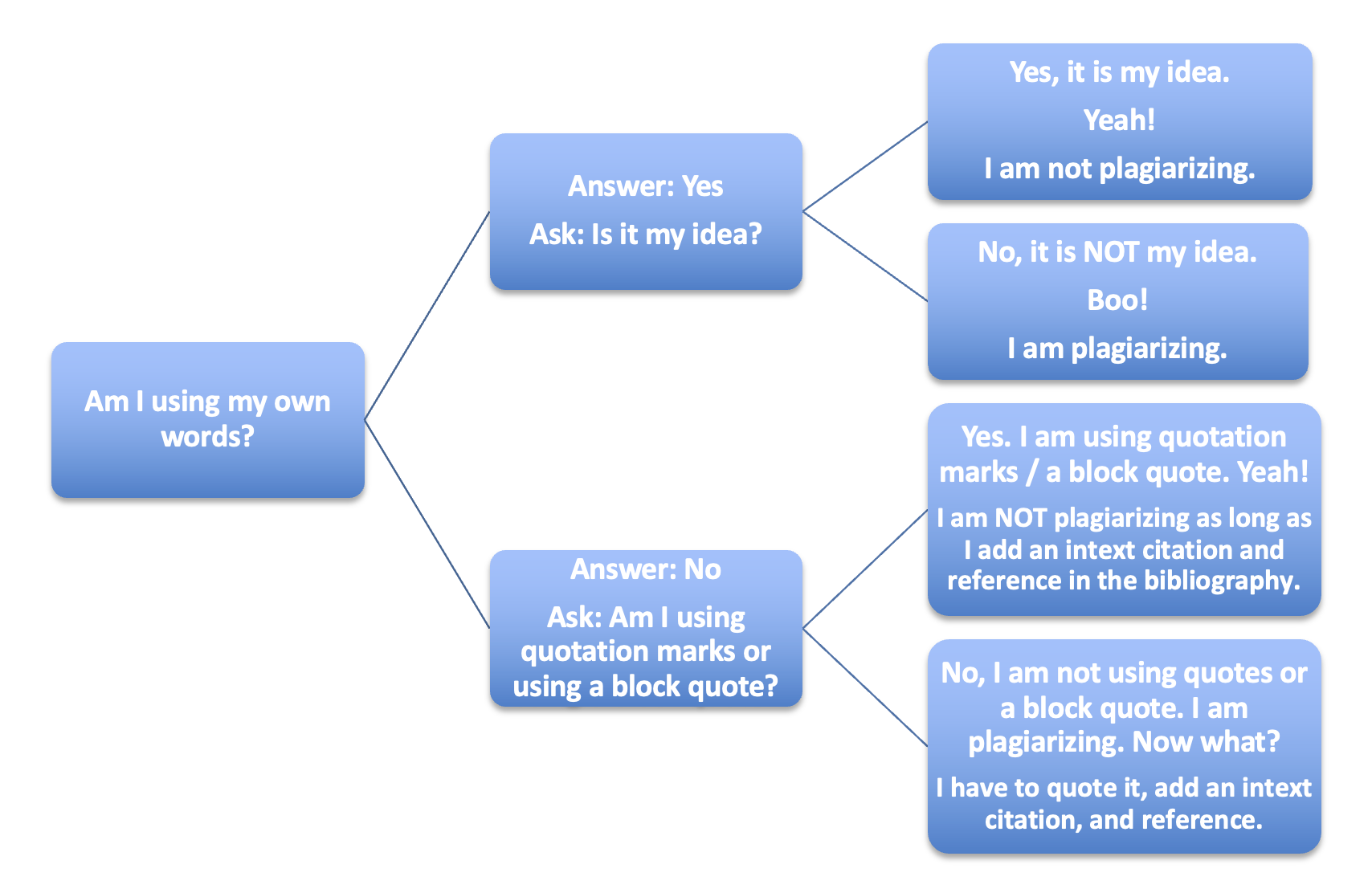24 Academic Integrity
Plagiarism and Academic Dishonesty
Academic cheating and plagiarism are a very serious violation and will not be tolerated in our department. This includes but is not limited to turning in work that is not your own, copying an assignment from a friend who has taken the class in a previous semester, quoting, or using information from a source without citing where you got this information from, or any type of copying. Use of work that is not your own is considered plagiarism.
It is important to be aware that students involved in such acts are subject to charges of misconduct and Student Conduct violations as stated in the college catalog. All work for a course MUST be completed by the student enrolled. You may NOT let other people complete your work in any course. You may NOT use work you completed for another course in a different course unless you have discussed it with your professor, and they have given you guidelines for modification. If your professor suspects any academic dishonesty or plagiarizing that violate college academic honesty/student conduct guidelines, you will be reported to the Office of Student Affairs for a Student Conduct violation.
What is plagiarism?
In a nutshell, plagiarism is when you copy, modify, or use someone else’s work, and you don’t give them credit for it. For instance, if you find a great article, quote, statistic, or other piece of information on the internet and you copy and paste it into your research paper; that is plagiarizing. Plagiarism is also when you copy something from a book, journal, and newspaper, or buy/borrow a paper off the internet or from another student. The list could go on for the rest of this page, but we think you get the idea. Now, here’s the thing: plagiarism is not always intentional! Even if you paraphrase or summarize someone’s work, you are still plagiarizing if you don’t give credit to the original author. All forms of plagiarism are treated the same by our department.
Plagiarizing in the CHDV Department and at Palomar College
Palomar College and the Child Development & Education Department take plagiarizing VERY seriously. Professors report plagiarizing and cheating in both face to face and online classes to the Office of Student Affairs. It is something we dislike doing, but we don’t believe it is fair for students who copy and/or cheat to be rewarded with passing grades.
Plagiarism in essence is submitting someone else’s work as your own. It may also include any of the following:
- Verbatim copying without proper documentation,
- Paraphrasing without proper documentation,
- Patching together a quilt-work paper from diverse sources without proper recognition of those sources,
- Unacknowledged appropriation of information or ideas from someone else. This includes copying information from the internet.
- Using a paper or assignment you’ve previously turned in in another class for a different class. All work that you complete for a class needs to be done for that course.
As for the college, Board Policy 5500 lists the Student Conduct Guidelines. The first item in a list of 14 guidelines for the use of an Incident Report is as follows:
- Students are expected to avoid any type of dishonesty, including, but not limited to cheating, plagiarism, forgery, fabrication or counterfeiting documents, furnishing false information to the College, alteration or misuse of college documents or records, duplication of assignments, or aiding another in an act of dishonesty (Palomar College Governing Board, n.d.).
You can visit the Student Affairs student discipline information page for more information. for more information on Student Discipline issues.
What happens if I get caught?
There is a long list of potential consequences to plagiarizing. Most likely, the professor will discuss his/her findings with the student then file a Student Code of Conduct Violation Report with the Office of Student Affairs. Each situation is a little different, but in many cases, the professor will fail the student on the assignment with a zero. Does this mean the student fails the class? Well, it all depends on the student’s grade in class before and after the plagiarizing takes place. Many times, the student does end up failing the class. The Director of Student Affairs will contact the professor and student to discuss the situation. Student Conduct violations can result in removal from a course, suspension from the college, or expulsion.
Best advice…. DON’T PLAGIARIZE!
The following information will give you guidelines to follow to ensure you are not plagiarizing.

Use the above information to start to assess if you are plagiarizing someone else’s work. This is just a starting point. Luckily, it is easy to learn how to use citations and build a reference page. Go to the Palomar College Library website, on the right-hand side about halfway down, you will see the words “Easy Bib”. By selecting this option, Easy Bib will help create citations for all types of sources. The most important thing is to be sure to click on APA as you start.
As with anything in this manual, please ask your professor if you have any questions along the way. We would much rather help you BEFORE an assignment is due to avoid plagiarism than have to deal with plagiarism after an assignment is turned in!
Media Attributions
- Cheating © Palomar College Child Development Department is licensed under a CC BY (Attribution) license

